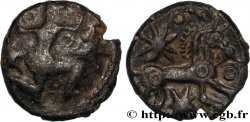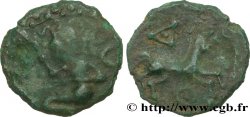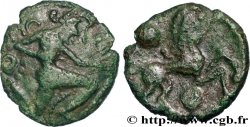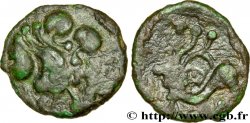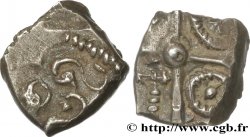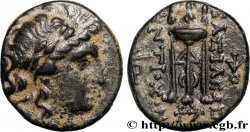bga_734025 - GALLIA BELGICA - BELLOVACI (Area of Beauvais) Potin aux chevrons, classe Ib
110.00 €(Approx. 128.70$ | 94.60£)
Quantity
Add to your cart

Type : Potin aux chevrons, classe Ib
Date: c. 50-20 AC.
Mint name / Town : Beauvais (60)
Metal : potin
Diameter : 16,5 mm
Orientation dies : 9 h.
Weight : 2,84 g.
Rarity : R1
Coments on the condition:
Monnaie bien centrée, de jolis détails avec une belle patine grise
Catalogue references :
Obverse
Obverse legend : ANÉPIGRAPHE.
Obverse description : Tête stylisée à gauche, le nez pointu et l’œil marqué par un globule ; la chevelure marquée par un arc de cercle.
Reverse
Reverse legend : ANÉPIGRAPHE.
Reverse description : Flan partagé en deux : au-dessus, S couchée ; au-dessous, trois chevrons.
Commentary
D'après le classement du Nouvel Atlas, ce potin appartient à la var. 3 de la classe II, alors qu'il appartient à la classe I dans le Traité de S. Scheers.
According to the classification of the New Atlas, this potin belongs to the var. 3 of class II, while it belongs to class I in the Treatise of S. Scheers
According to the classification of the New Atlas, this potin belongs to the var. 3 of class II, while it belongs to class I in the Treatise of S. Scheers








 Report a mistake
Report a mistake Print the page
Print the page Share my selection
Share my selection Ask a question
Ask a question Consign / sell
Consign / sell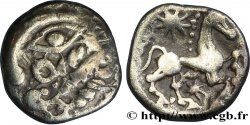
 Full data
Full data